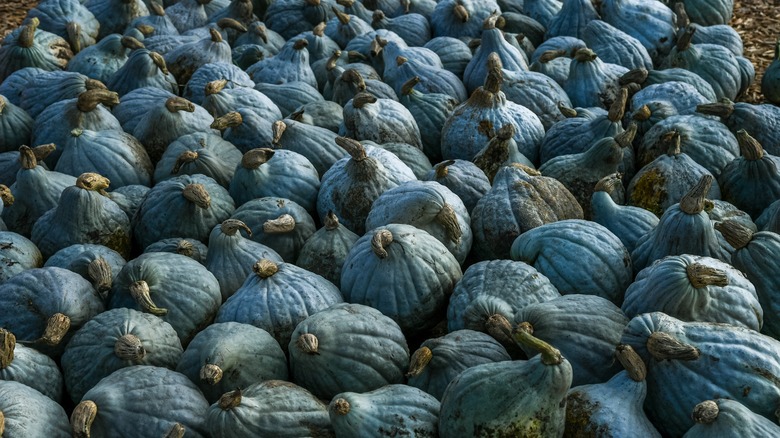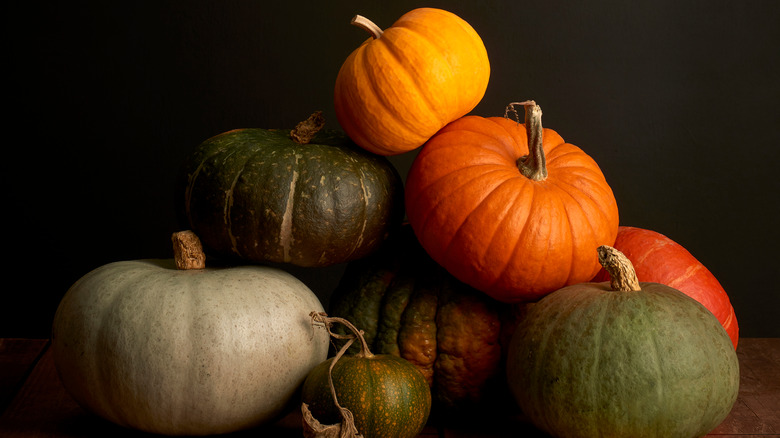The Easiest Hubbard Squash Variety To Cook With
'Tis the season for swapping out Palomas for Mezcal Negronis. Fall foods might make you want to warm your hands around a Pumpkin Spice Latte or cozy up with a bowl of chili. But today, we're talking about one fall vegetable that doesn't get as much love as pumpkins or acorn squashes. Introducing the Hubbard squash. If you've ever visited a fall farmer's market, then you've almost certainly laid eyes on one before. They're hard, bumpy, squat squashes around one foot wide and typically between five and 15 pounds, says Food Network.
The skin is so thick, in fact, that many grocery stores sell Hubbards pre-cut to save home cooks from the sawing. Some folks choose to cook their Hubbard squashes with the skin on to make the unpleasant de-skinning a little easier. But, don't let the thick skin fool you — the flesh inside is buttery, sweet, tender, and rich in flavor. It's also rich in nutrients, including iron, vitamins A, B, and C, fiber, and riboflavin, per Specialty Produce. It's definitely worth the trouble of getting around the skin — but, which variety of Hubbard squash is the easiest to cook with?
Look for a firm mid-sized squash
According to Specialty Produce, Hubbard squashes range in color from blue to orange, green, and gold. And their shapes are just as varied, says The Spruce Eats. Hubbard squashes can be short with a wide base, teardrop-shaped, or pointed and ovular like an almond. But, shape and color aren't even the most important factor when determining the easiest variety for cooking. It's all about size. Hubbard squashes can weigh up to 20 pounds, but the sweet spot for home cooks is somewhere around the three-to-four-pound range, says Serious Eats. At this size, your squash will have sweet, tender, dry, fine-grained flesh.
There are some other idiosyncratic flavor differences, too. The smaller "red kuri" variety of Hubbard squash boasts a chestnut-y flavor and is considerably easier to peel than the infamously thick-skinned blue Hubbard. Also, per The Spruce Eats, blue Hubbards are typically drier than orange ones, which tend to be sweeter. Organic Facts recommends looking for squashes with particularly hard, matte, well-shaped exteriors. These ones, it says, are more set up structurally and will function the best in your fall recipes. Get into the spirit of the season and try it for yourself with this spiced hubbard squash bisque recipe with thyme, cognac, and a homemade nutmeg crème frâiche.

